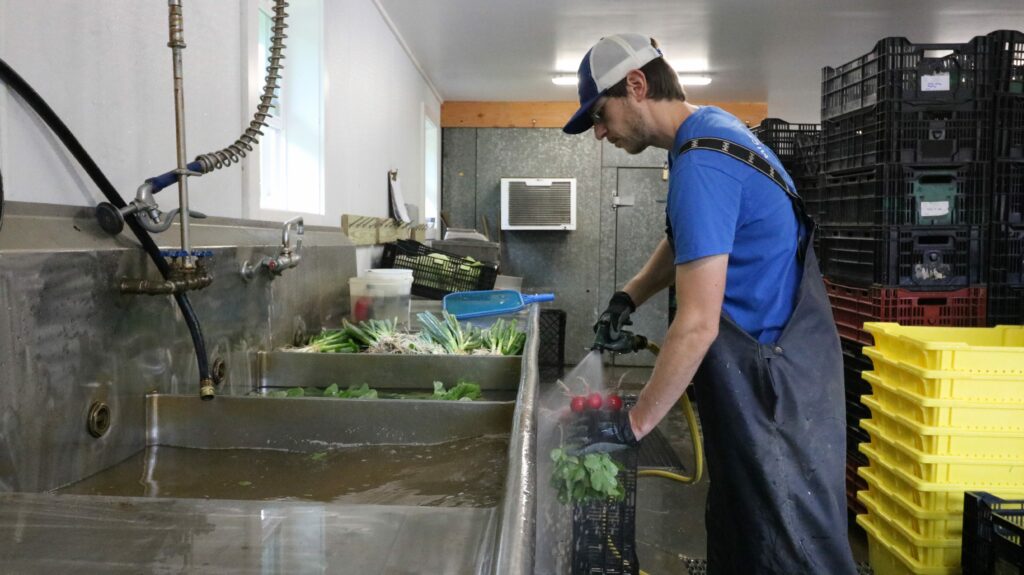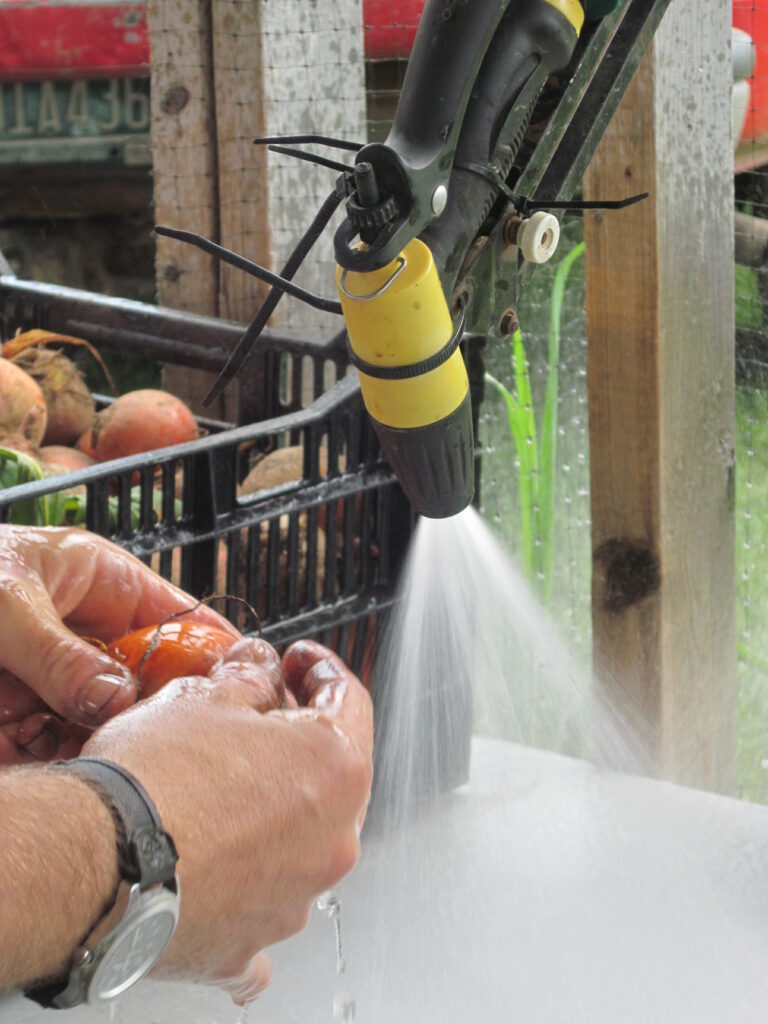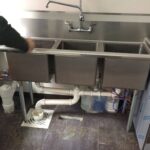A pdf of this blog post can be downloaded here.
Produce wash sinks and tanks on vegetable farms consist of several different styles, designs, sizes, and uses. The needs vary from farm to farm but some features to consider are highlighted here. Some common basins for washing vegetables could include the following.
Commonly Used as Sinks
- Kitchen sinks
- Utility sinks
- Muckbuckets
- Livestock watering tanks
- Sheep stock tanks
- Rubbermaid stock tanks
- Repurposed dairy bulk tanks
- Maple sap tanks
- Restaurant sinks
- Double bay
- Triple bay
- With or without drainboards
Stainless restaurant sinks are great because they are large, durable, easy to clean, and fairly easy to find. The restaurant industry transitioned to full stainless construction, so now there are used tables and sinks with stainless tops on galvanized legs available on the used market. The produce safety rule does not require fully stainless steel equipment, just that food contact surfaces are smooth and cleanable as appropriate.
Upgrading to a stainless restaurant sink is not required and what you have now may be working great for your needs. If that’s the case there are a few upgrades that might make your vegetable washing even better.
Water delivery from above
This could be done with tall faucets, industrial sprayers, or even a suspended hose. Find ways to keep hoses out of the sink, tank or tub. There are several hooks, hangers, or spring mounted options available to keep them from getting in the way.
If using hoses this keeps them up off the floor, minimizing tripping hazards, and keeping the hose, and floor cleaner.
When routing water supply lines, ensure they are not run directly over where produce is handled. This avoids condensation from the lines coming into contact with produce.
For more information in hoses check out the blog post here.
Hands-Free Operation
If your water delivery comes from a sprayer you’ll realize that one hand is always on the sprayer wand or it is left constantly on. The use of a foot-operated pedal valve can free up both hands for washing the crop, cut down on water use, and excess overspray.
These pedal valves for hands-free operation can be found from a restaurant supply company or plumbing stores.
American Standard – Manufacturer
Additional hands-free spray options are outlined in Root Washers for Produce Farms.
Drain Valves
Another feature to consider on your wash sink or tank is to have a valve for rapid draining.
Your wash water generally doesn’t need to go into a septic system but check with local officials. Guidance for vegetable wash water discharge in Vermont can be found here. Sink drains should be “broken”, resulting in an air gap for prevention of backflow in the event of a clogged drain backing up into your fresh produce.
If your drain is underneath the sink then a twist drain makes it easy to drain the water without crawling underneath.

Height
Consider the optimal height of the sink. Adjusting, or modifying the legs to a comfortable working height will make the work easier and more comfortable. Use long adjustable water supply lines to allow for experimenting with height. If you are using a stock tank the height of these could easily be adjusted using wood blocks or cinder blocks temporarily with a more permanent smooth cleanable surface being installed later. If you find a height you like a metal stand can be a good option, which can also make it possible to move around with a pallet jack. Save your back, and make the station comfortable!

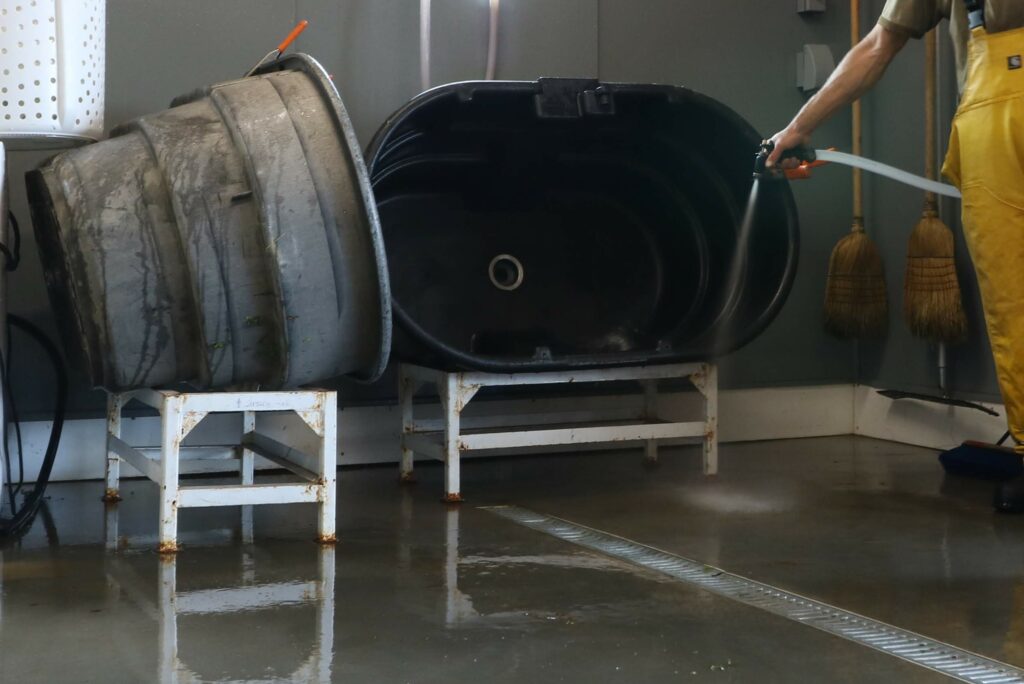
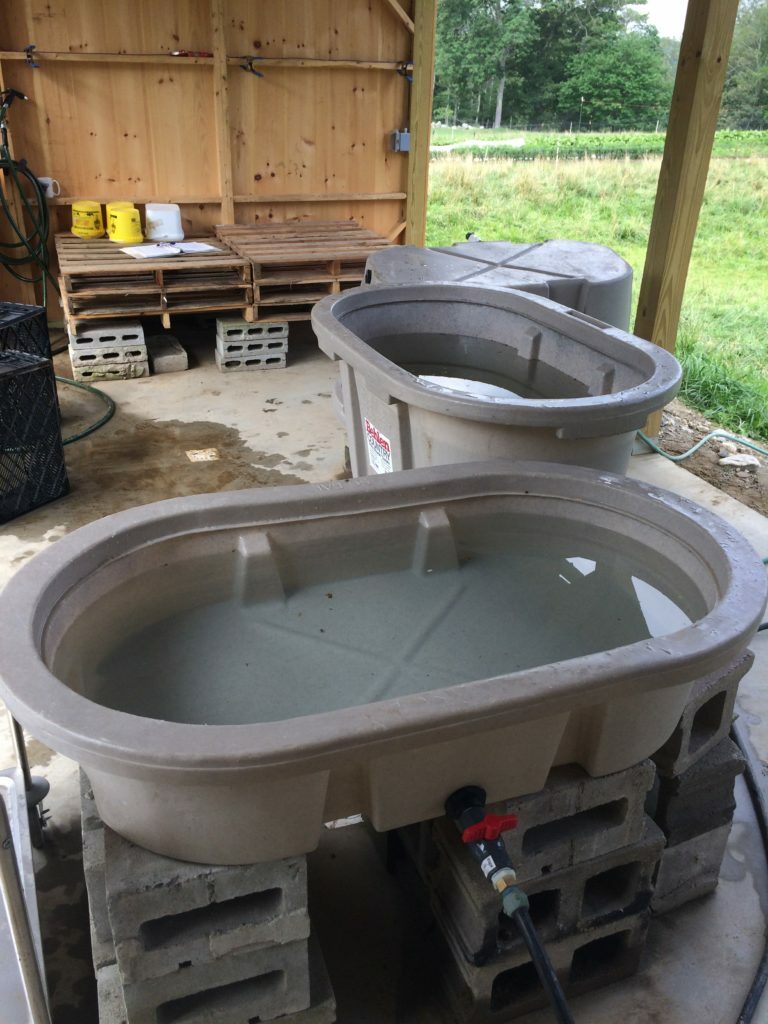
Sinks & Tanks
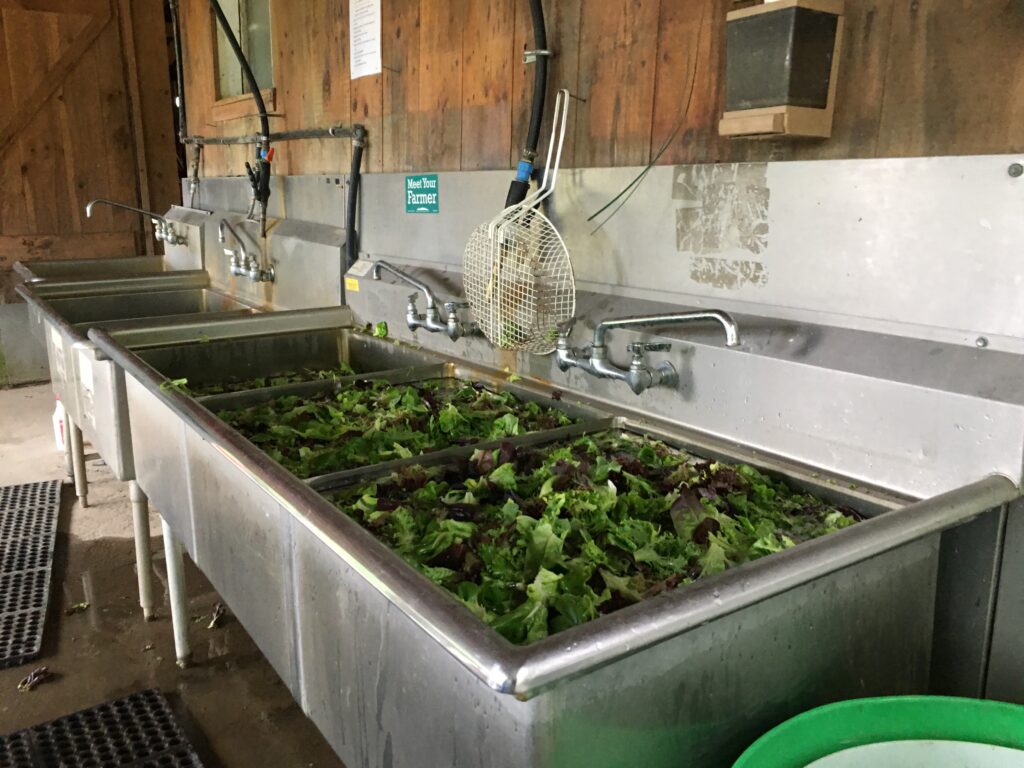

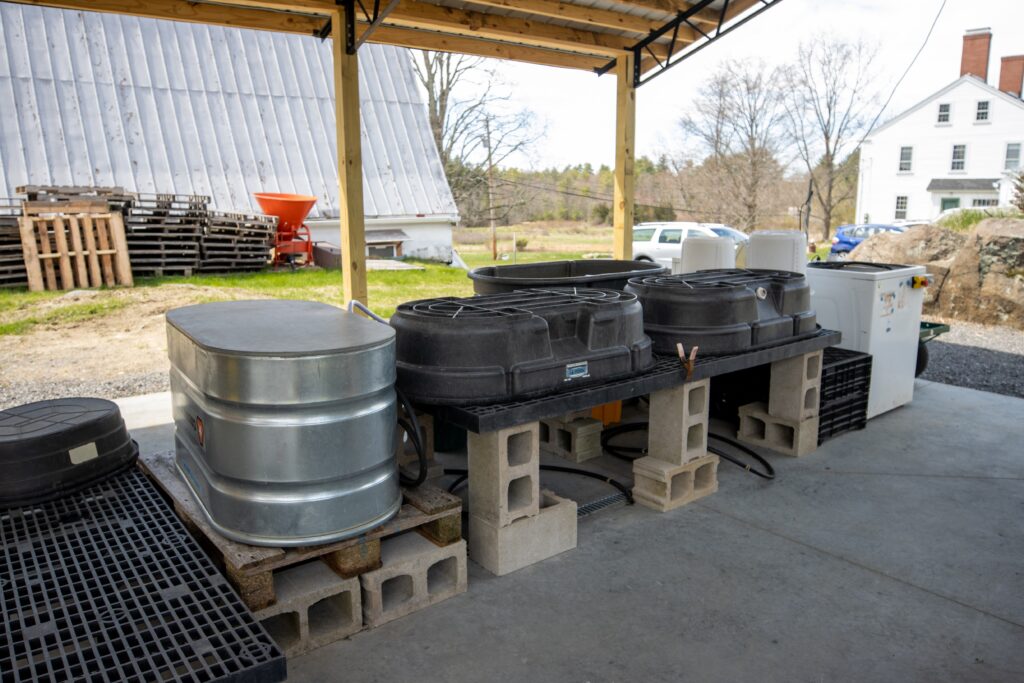
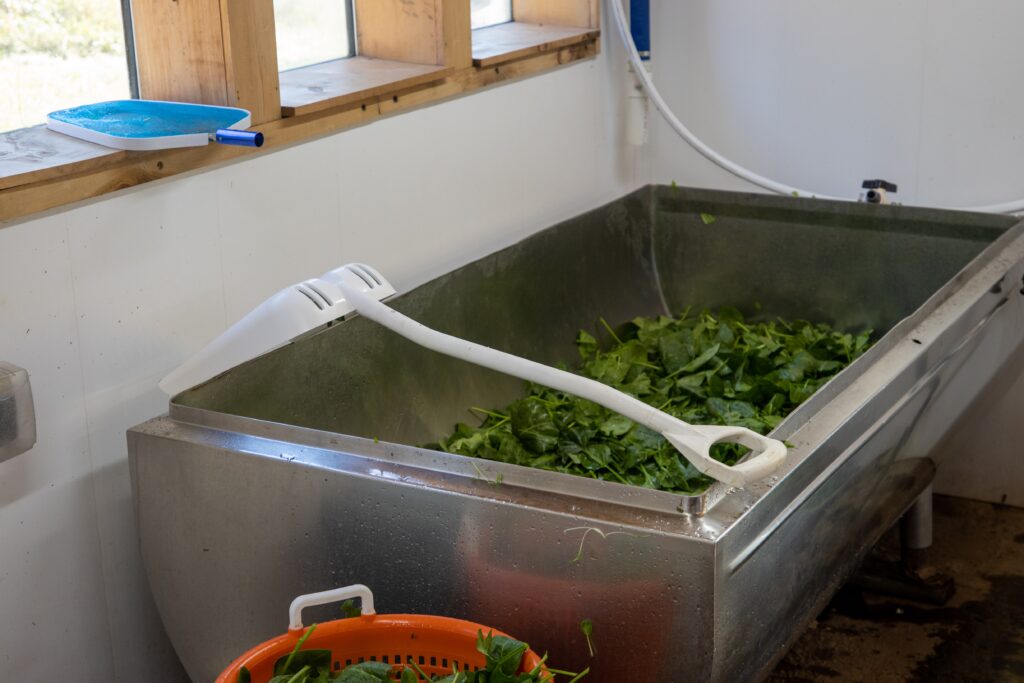
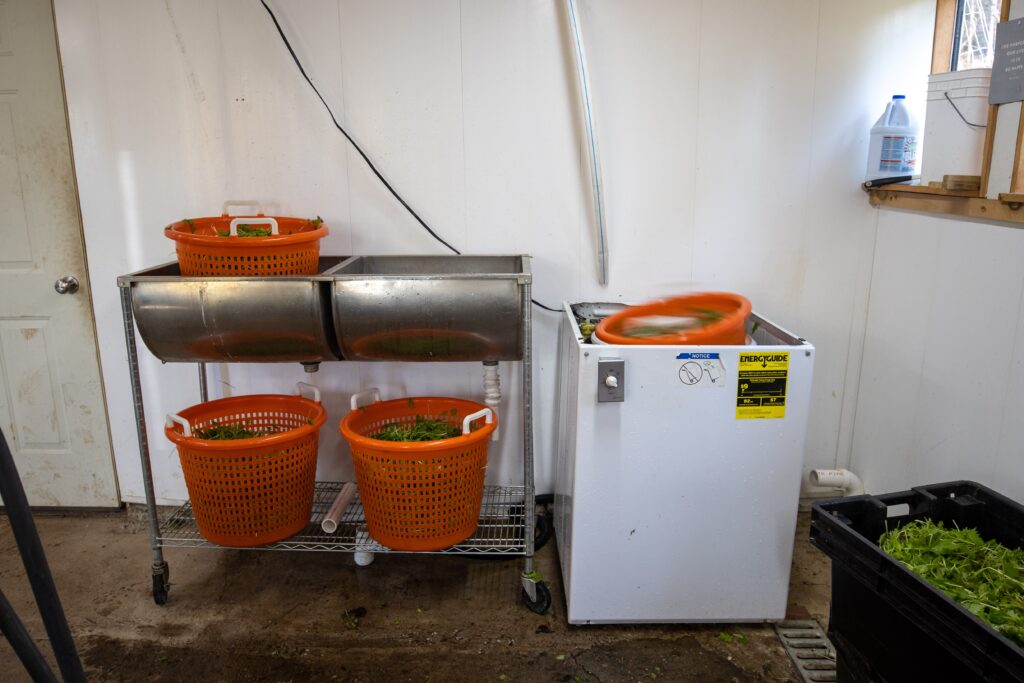
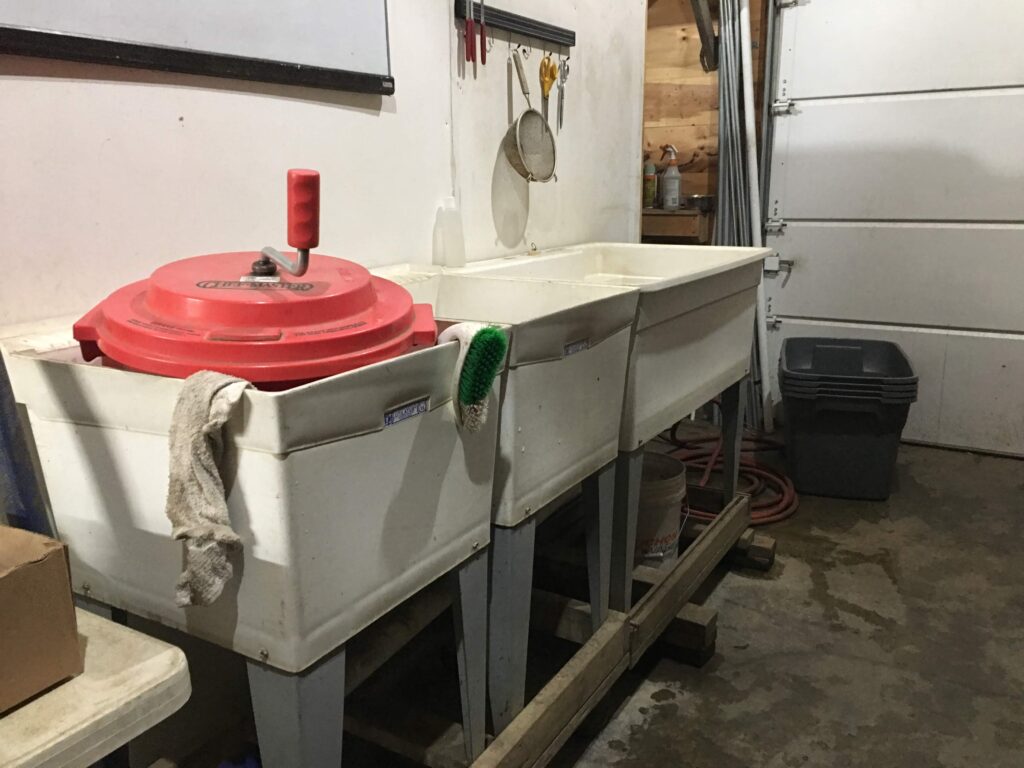
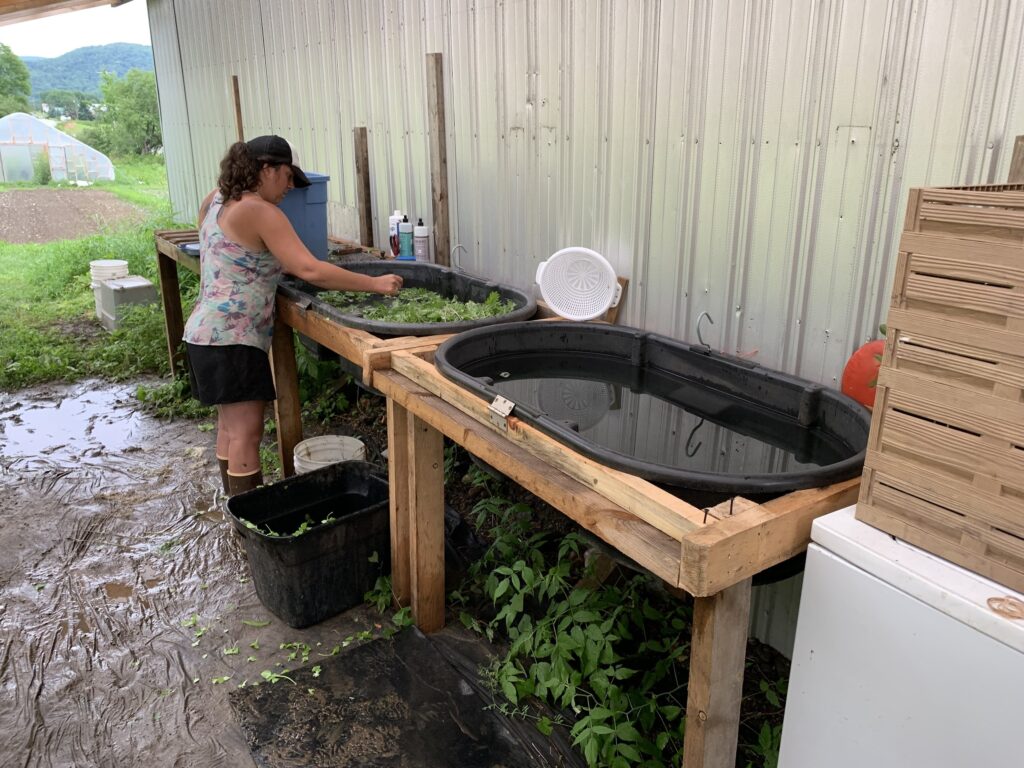
Share this post by using this short link
Related Articles
Everything Postharvest: go.uvm.edu/postharvest
Hanging Hoses: go.uvm.edu/hoses
Guidance on Wash Water Discharge from Vegetable Pack Sheds: go.uvm.edu/vegwater


